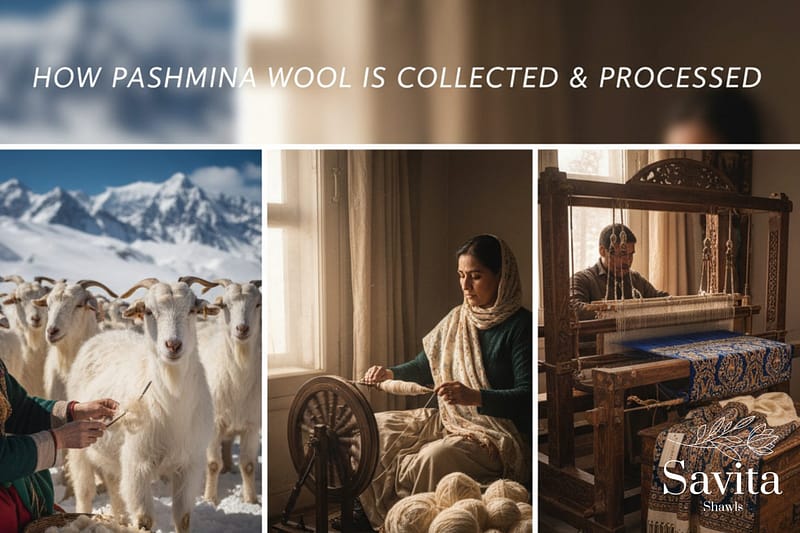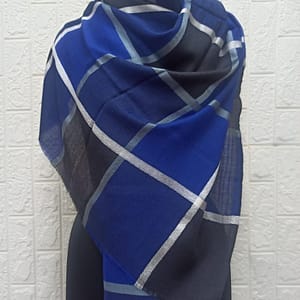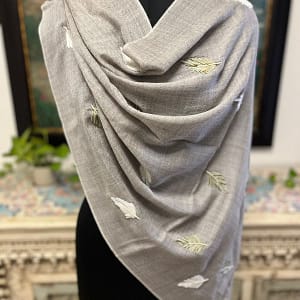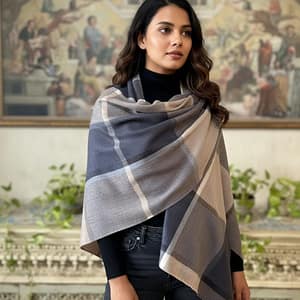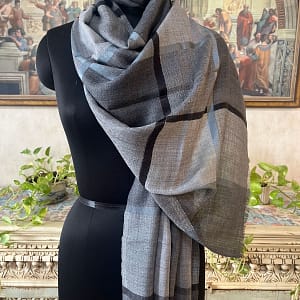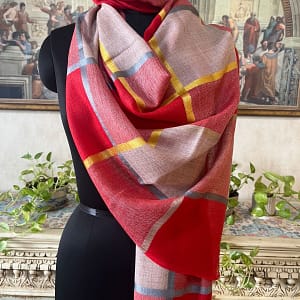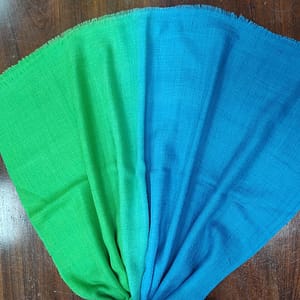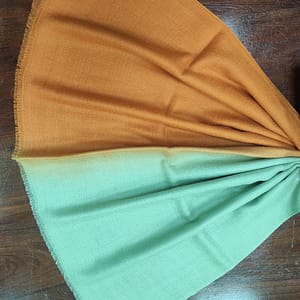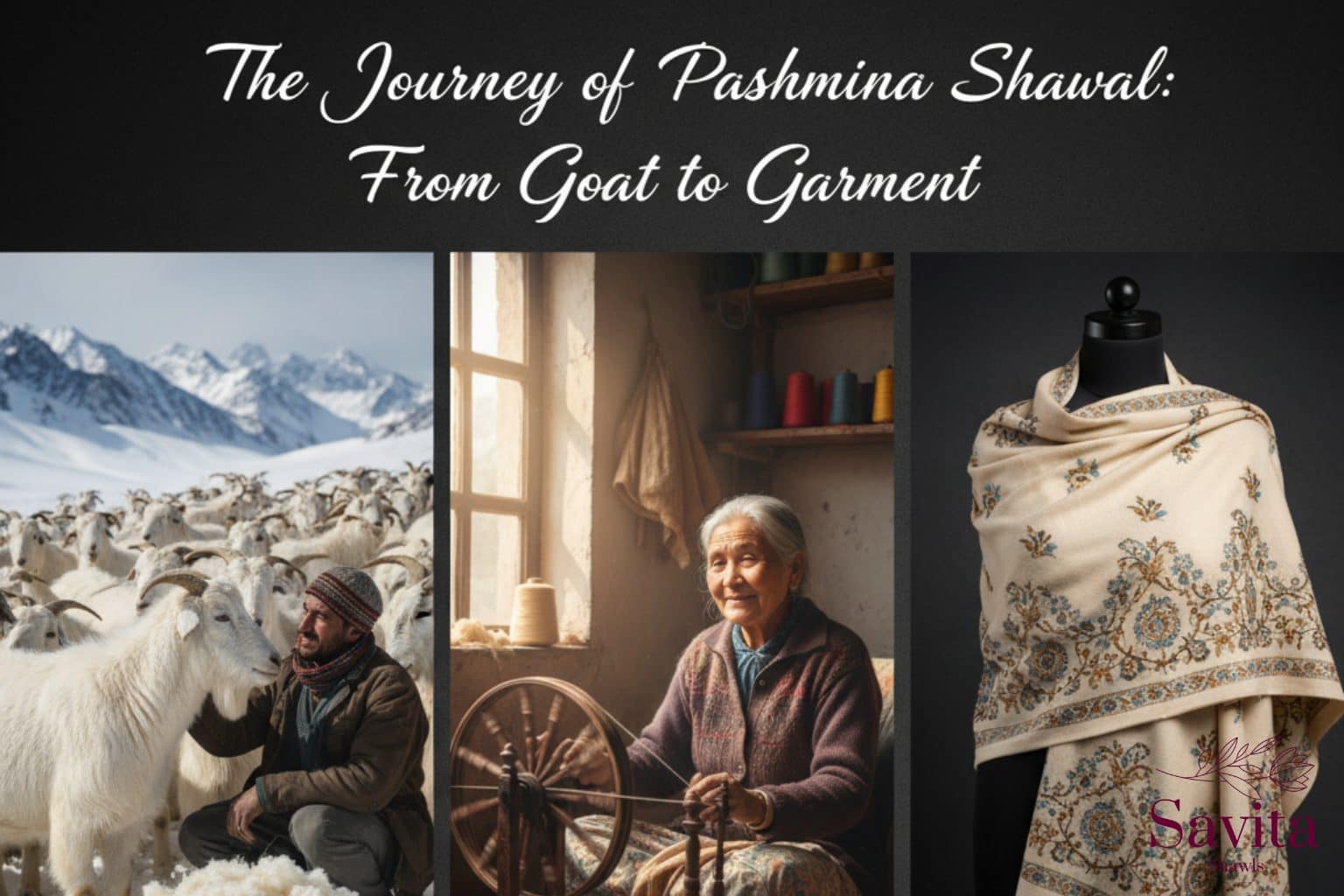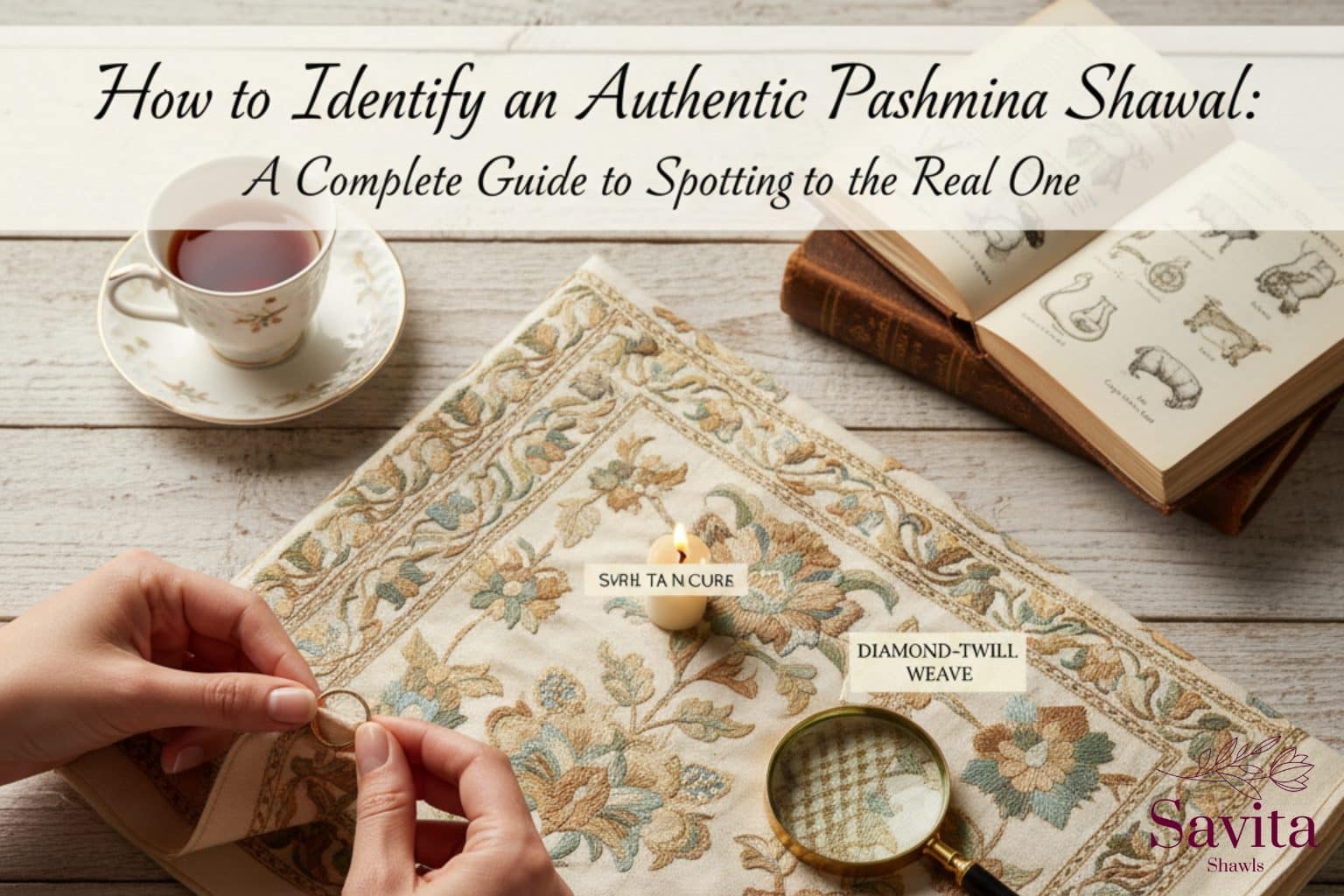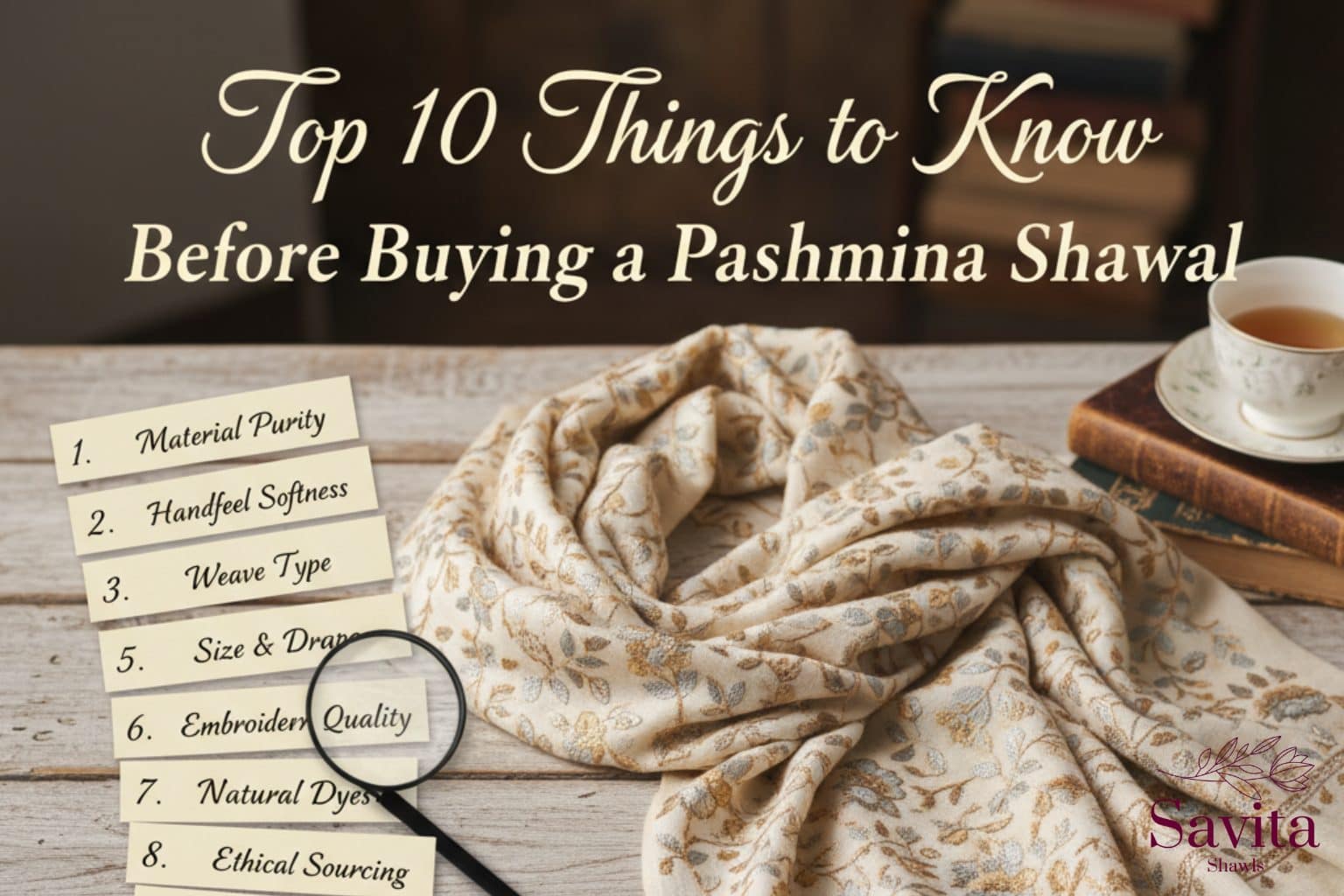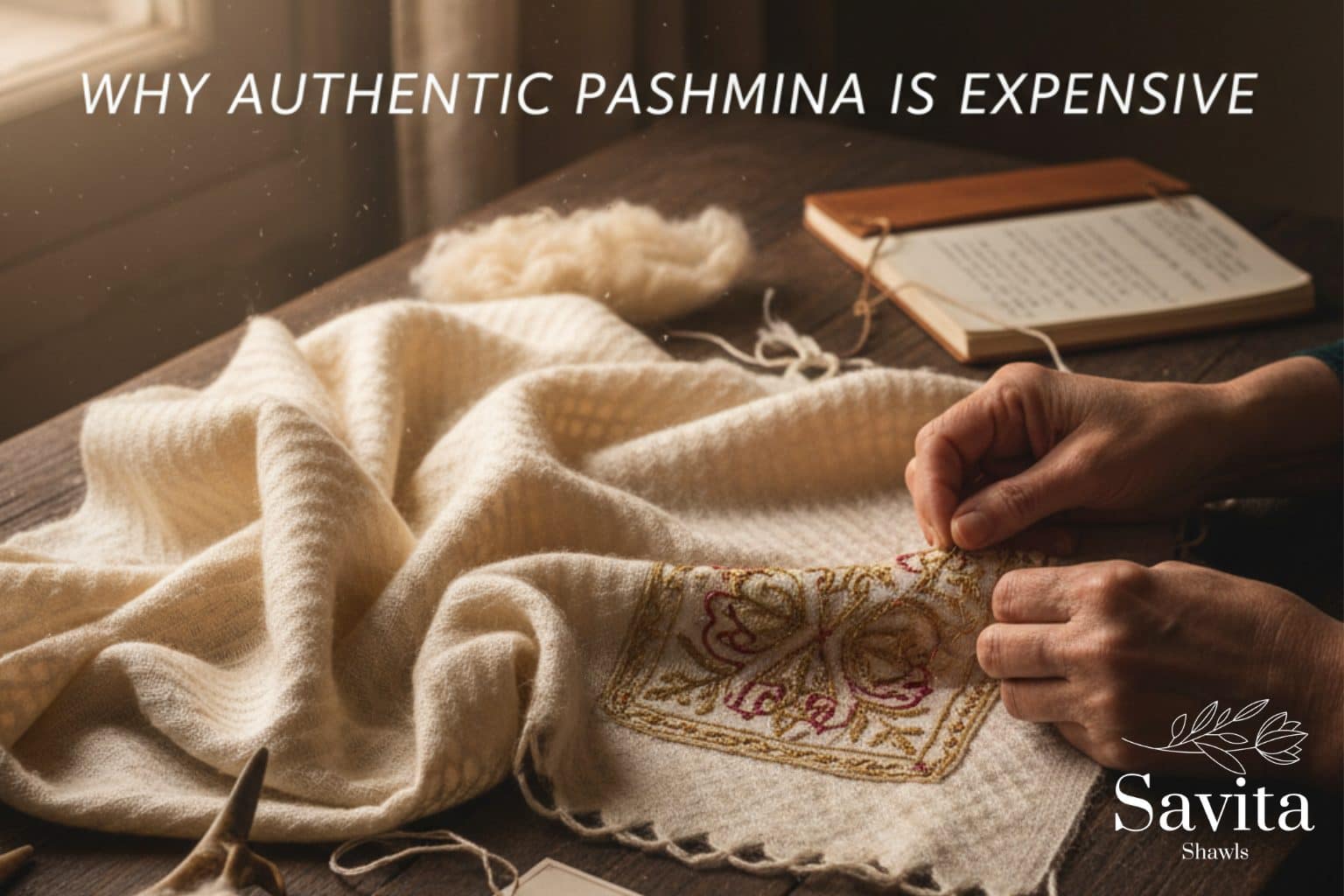Introduction – The Art Behind the Pashmina Wool Process
Pashmina Wool Process, a centuries-old tradition, starts at the top of the Himalayas and finishes with a beautiful shawl that is worn over the shoulders. Pashmina wool, which is known for its unparalleled softness, heat and elegance, is not just a fiber; it is a heritage material that requires time, skills and patience to work with.
Savita Shawls does not only respect the Pashmina wool heritage but also keeps it alive by the very same Pashmina wool collection and weaving process that has been passed on by the master craftsmen of yesteryears. This post illustrates the whole Pashmina Wool Process in a detailed manner, beginning from the raw wool procurement to the finishing touch of the final product by hand.
Origin of Pashmina Wool – The Story Begins in the Himalayas
The Pashmina Wool Process is initiated in the chilly Himalayas at high altitudes, primarily in Ladakh, Kashmir, and Tibet, where the Changthangi goats are found. These hardy goats develop a superb inner undercoat as a safeguard against the icy weather. The superfine downy coat, which is called Pashmina, is the main reason why the fiber is so valued.
- Region: Changthang Plateau, Ladakh
- Goat Breed: Capra Hircus (Changthangi)
- Temperature Conditions: -30°C to -40°C
In such difficult and extreme climate, the wool has just to be very fine, soft and warm. Each Changthangi goat provides just 80 to 150 grams of usable Pashmina fiber in a year, thus making the whole Pashmina wool collection process a rare and expensive one.
The Pashmina Wool Collection – Gentle and Ethical Gathering
Regularly, the wool of sheep is shorn off but the Pashmina collection is completely the opposite as it is done with tender loving care. The fleece is not cut but manually combed in the spring season when the goats lose their winter coat.
Steps in the Collection Process:
- Timing the Collection:
The combing is done between March and May, when goats naturally shed their fleece. - Manual Combing:
Artisans use traditional wooden combs to gently remove the soft undercoat without harming the animal. - Sorting the Wool:
The collected wool is sorted manually to separate fine Pashmina fibers from coarse outer hair. - Cleaning and Dehairing:
The wool is washed in cold water using mild soap to remove impurities and then dehaired to get the softest fibers.
This eco-friendly and Pashmina Wool Collection that is animal friendly, provides nature’s most luxurious product fiber that is of the highest quality.
Sorting and Cleaning – The Foundation of Purity
Post-collection, the raw Pashmina is subjected to sorting and cleaning which is a crucial step in the Pashmina Wool Process. The artisans are extremely selective as they only choose the softest pashmina fibers and even then they clean them in a very labor intensive way.
Key Steps:
- Sorting: Based on color, fineness, and fiber length.
- Cleaning: Washed multiple times to remove dirt and grease.
- Drying: Naturally dried in the shade to retain softness.
This labor-intensive stage ensures that only pure Pashmina wool moves forward for spinning.
Spinning Pashmina – Turning Wool into Yarn
Then comes the stage in the Pashmina Wool Process which is spinning, where the cleaned fibers are hand-spun into yarn. Women artisans using a small wooden wheel called the ‘Charkha’ performs this very traditional technique of spinning yarn.
The Traditional Spinning Process:
- Hand-Spinning: Each strand is spun by hand, creating a lightweight yet durable yarn.
- Skillful Twisting: Spinners ensure uniform thickness and strength.
- Testing Yarn: The yarn is tested for smoothness and consistency.
The weaving stage imposes heavy demands, as even the slightest inconsistency has a negative impact on the final texture of the shawl. The process of making the authentic Spinning Pashmina yarn takes several days for just one piece.
The Weaving Process – Where Threads Become Art
Weaving is the stage, where raw beauty gradually becomes timeless elegance. Using traditional handlooms, expert weavers are the ones to form the delicate shawls by interlacing the spun yarn.
Weaving Stages:
- Setting the Loom: Threads are aligned and tensioned perfectly.
- Manual Weaving: Each shawl takes weeks or even months to complete.
- Pattern Creation: Artisans create intricate designs, motifs, and borders using jacquard or twill techniques.
- Finishing Touches: The woven piece is trimmed, washed, and softened naturally.
The Pashmina weaving process requires a lot of patience and attention, as mistakes can easily ruin days of hard work. That’s why every piece from Savita Shawls is a special dedication and art story.
Dyeing and Designing – Blending Heritage with Modernity
After the weaving is completed, the garment is moved to the dyeing and designing stage. To keep Pashmina fibers’ softness and quality, natural and eco-friendly dyes are employed.
Dyeing Process:
- Natural Dye Sources: Plant-based, mineral, or organic colorants.
- Temperature Control: Wool is dyed at low temperatures to prevent fiber damage.
- Design Embellishments: Hand embroidery, kani weaving, or printed motifs enhance its luxury.
At Savita Shawls, we combine ages-old skills with modern aesthetics to create shawls that are attractive to both international customers and Indian art collectors.
Quality Testing – Ensuring Authentic Pashmina Standards
Quality control is an important part of every shawl, and it is done more than once, plus the one labeled ‘ready for sale’ is done with utmost care. Since real Pashmina is light, soft, and warm, each product receives the same tests for those three main characteristics.
Quality Parameters:
- Fiber Thickness: Below 16 microns (ultra-fine fiber).
- Weight: Extremely light, even in larger sizes.
- Softness & Texture: Smooth, warm, and breathable.
- Handwoven Seal: No machine-made patterns or uniformity.
Thus, this process makes sure that every shawl passed under the Savita label is a true craftsmanship representation.
The Final Touch – From Artisan Hands to Your Collection
As soon as the Pashmina Wool Process is complete, every shawl is taken care of and finished with the utmost care. The edges are fringed, the surface is brushed, and the final checks are done before packaging.
It’s not just a product; it’s a luxury that’s hand-made and represents centuries of artistry alongside cultural pride. By purchasing from Savita Shawls, one not only acquires a piece of elegance but also supports sustainable craftsmanship.
Conclusion – Pashmina Wool Process: A Legacy Woven in Time
The process that transforms Pashmina wool—from the goats living in the Himalayas to the finished shawl—is very long, complicated, and full of emotions. Authenticity, skill, and a deep respect for the tradition are the features of every step of the Pashmina Wool Process.
Savita Shawls cherish and keep this tradition, selling real Pashmina shawls, cashmere wraps and luxury stoles made with passion and precision.
When you use a product from Savita Shawls, you are in the very center of the Pashmina Wool Process-a work of art that is created by nature and then refined by hand.
Related Products
Showing 1–9 of 805 results
-
Savita Shawls Royal Blue & Black Wool Natural Silk Box Pashmina Shawl for Women
Read more -
Savita Shawls Elegant Grey & Black Wool Natural Silk Box Pashmina Shawl for Women
Read more -
Beige & Charcoal Wool Natural Silk Box Design Pashmina Shawl for Women
Read more -
Yellow & Navy Wool Natural Silk Box Design Pashmina Shawl for Women
Read more -
Grey & Black Wool Natural Silk Box Design Pashmina Shawl for Women
Read more -
Red & Beige Wool Natural Silk Box Design Pashmina Shawl for Women
Read more -
Green & Blue Wool Natural Ombre Pashmina Shawl for Women
Read more -
Beige & Soft Pink Wool Natural Ombre Pashmina Shawl for Women
Read more -
Rust Orange & Mint Green Wool Natural Ombre Pashmina Shawl for Women
Read more

